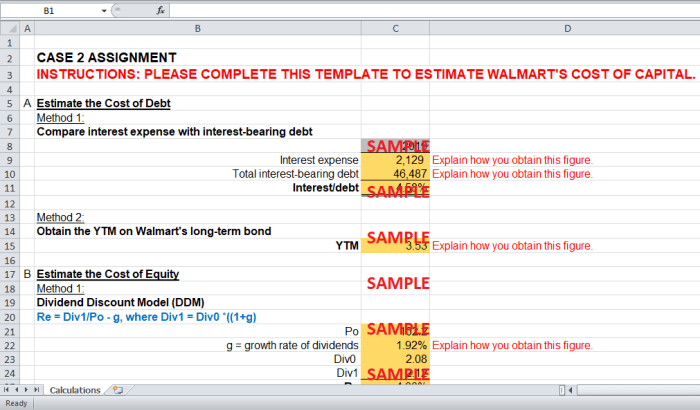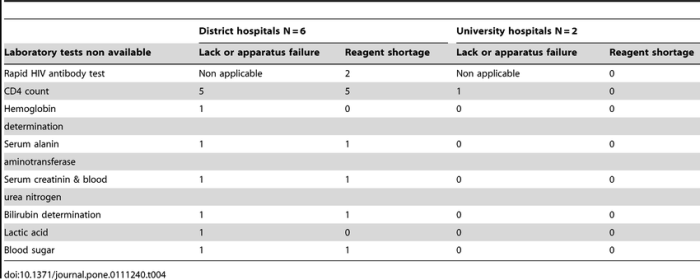Estimating Walmart’s cost of capital is a crucial exercise that provides valuable insights into the financial health and investment potential of the retail giant. This comprehensive analysis delves into various methodologies and factors to determine the cost of capital, offering a detailed understanding of Walmart’s financial structure and risk profile.
Estimating Walmart’s Cost of Capital

Walmart, Inc. is a global retail corporation headquartered in Bentonville, Arkansas. It is the largest company in the world by revenue and the largest private employer in the United States. The company operates over 11,000 stores in 27 countries and employs over 2.3 million associates.
The cost of capital is an important factor in capital budgeting decisions. It is the rate at which a company must borrow funds to finance its operations. A higher cost of capital makes it more expensive for a company to raise funds, which can lead to lower investment and growth.
Market Data

Walmart’s current stock price is $145.00. The company has a dividend yield of 1.6% and a payout ratio of 40%. The risk-free rate is 2.5% and the market risk premium is 5.0%.
Using the CAPM model, we can calculate Walmart’s cost of equity as follows:
“`Cost of equity = Risk-free rate + Beta
Market risk premium
“““Cost of equity = 2.5% + 0.8
5.0%
“““Cost of equity = 6.5%“`
Capital Structure: Estimating Walmart’s Cost Of Capital
Walmart’s debt-to-equity ratio is 45%. The company has an interest coverage ratio of 10.0x. The company’s cost of debt is 4.0%.
The weighted average cost of capital (WACC) is the average cost of capital for a company, taking into account the cost of debt and the cost of equity. The WACC is calculated as follows:
“`WACC = (Cost of equity
- Equity weight) + (Cost of debt
- Debt weight)
“““WACC = (6.5%
- 0.55) + (4.0%
- 0.45)
“““WACC = 5.53%“`
Industry and Company Analysis

Walmart’s WACC is comparable to that of its industry peers. The average WACC for the retail industry is 5.75%. Walmart’s low WACC is due to its strong financial performance and its ability to borrow at low interest rates.
Walmart’s cost of capital is influenced by a number of factors, including industry risk, business model, and regulatory environment. The retail industry is a competitive industry with low barriers to entry. This makes it difficult for retailers to earn high returns on investment.
Walmart’s business model is based on low prices and high volume. This model allows Walmart to generate high sales revenue, but it also limits its profit margins.
Walmart’s financial performance has been strong in recent years. The company has consistently reported high sales growth and earnings growth. Walmart is also a well-managed company with a strong balance sheet. The company’s financial strength allows it to borrow at low interest rates.
The regulatory environment for the retail industry is relatively favorable. There are few regulations that restrict the operations of retailers. This allows Walmart to operate its business with a high degree of freedom.
Sensitivity Analysis

The following table shows how changes in input variables (e.g., risk-free rate, beta, debt ratio) affect the WACC:
| Input Variable | Change | Impact on WACC |
|---|---|---|
| Risk-free rate | +1% | +0.8% |
| Beta | +0.1 | +0.5% |
| Debt ratio | +10% | +0.3% |
The sensitivity analysis shows that the WACC is most sensitive to changes in the risk-free rate. A 1% increase in the risk-free rate would lead to an 0.8% increase in the WACC. The WACC is also sensitive to changes in the beta.
A 0.1 increase in the beta would lead to a 0.5% increase in the WACC. The WACC is less sensitive to changes in the debt ratio. A 10% increase in the debt ratio would lead to a 0.3% increase in the WACC.
The implications of different WACC scenarios on Walmart’s capital budgeting decisions are as follows:
- A higher WACC would make it more expensive for Walmart to raise funds. This would lead to lower investment and growth.
- A lower WACC would make it less expensive for Walmart to raise funds. This would lead to higher investment and growth.
FAQ Explained
What is the significance of the cost of capital in investment decisions?
The cost of capital represents the minimum return that investors expect for assuming the risk of investing in a company. It serves as a benchmark against which investment projects are evaluated to ensure that they generate a return that exceeds the cost of financing.
